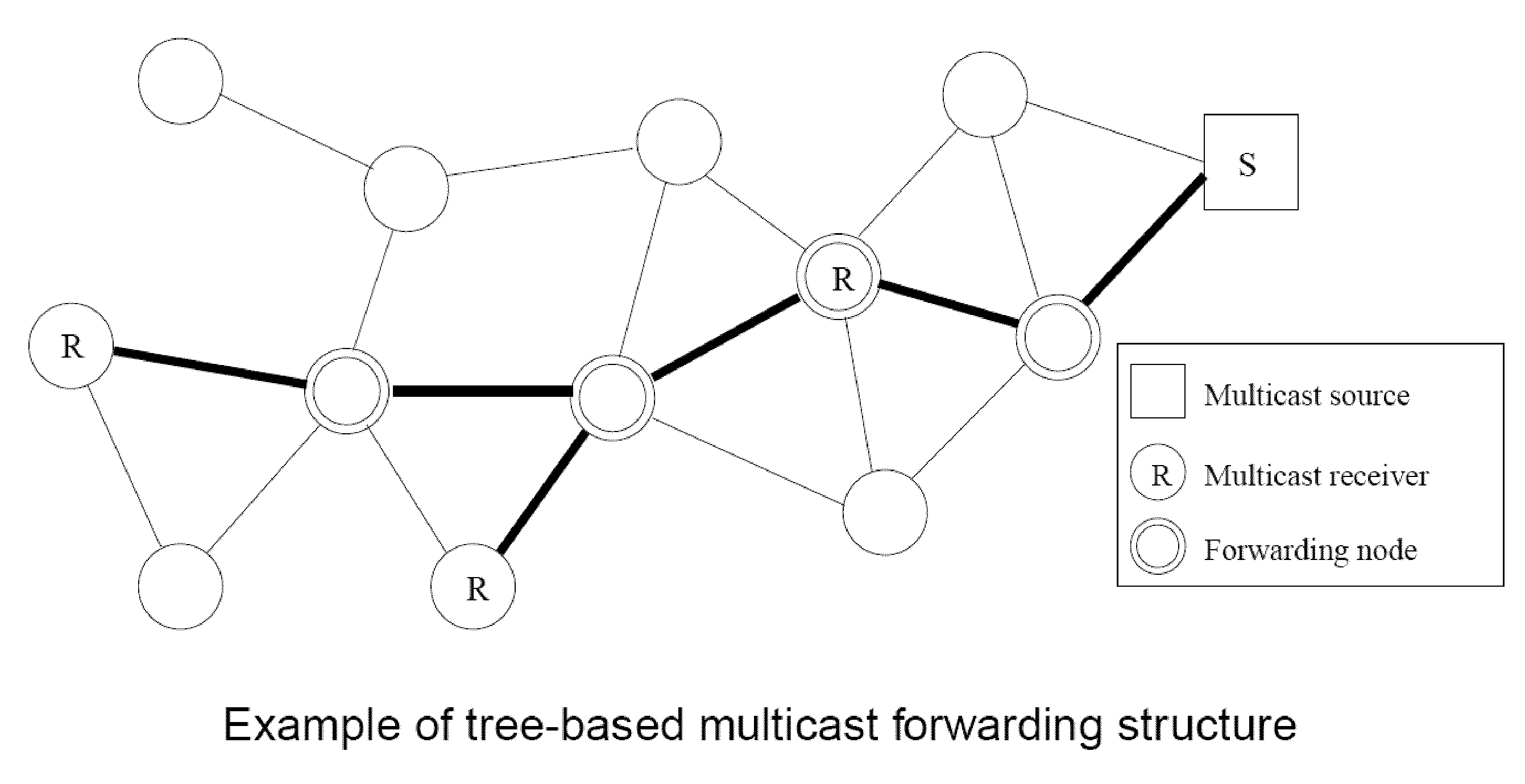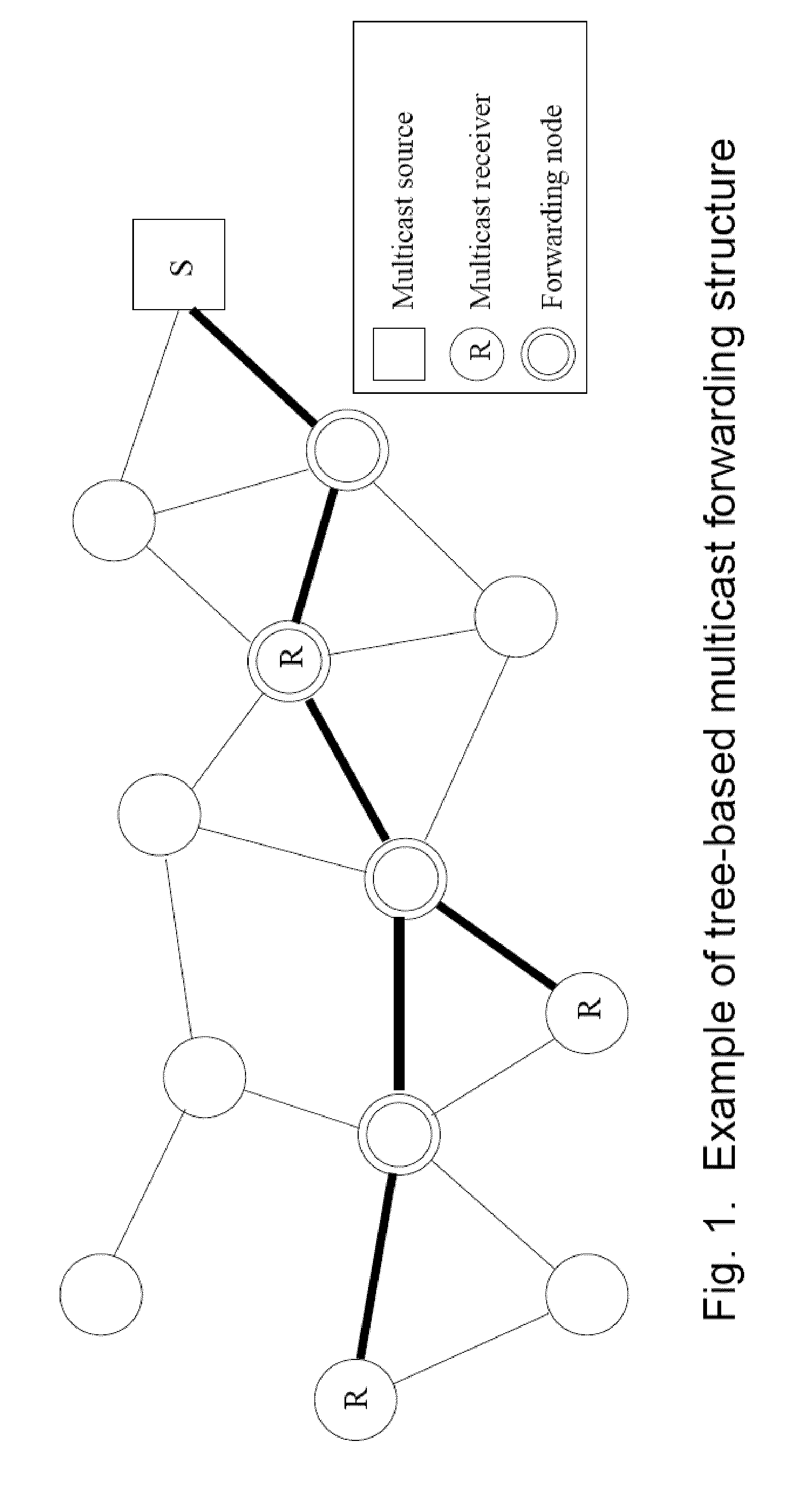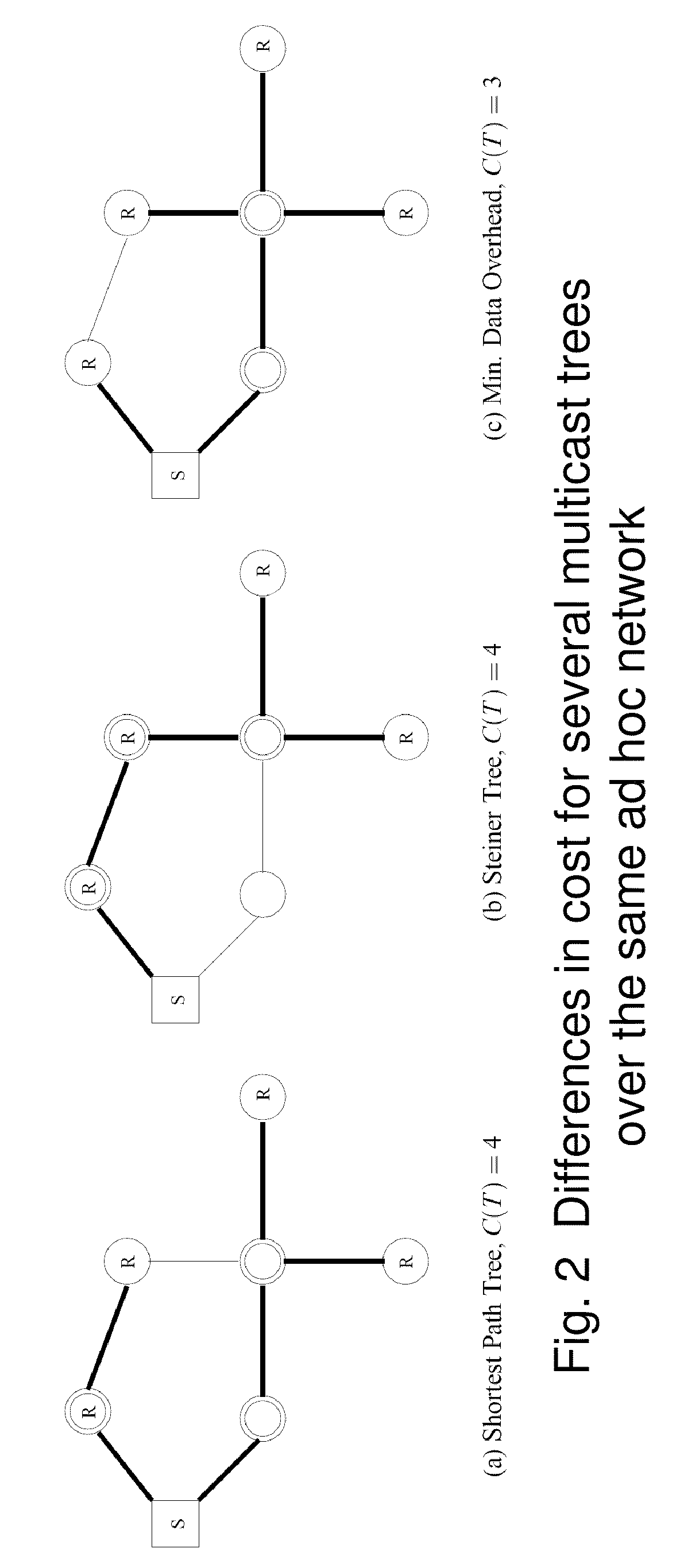Mobility-aware mesh construction algorithm for low data-overhead multicast ad hoc routing
a technology of mobile awareness and construction algorithm, applied in the field of mobile awareness mesh construction algorithm for low data overhead multicast ad hoc routing, can solve the problem that the forwarding structure used by existing ad hoc multicast routing protocols such as multicast meshes, shortest path trees (spt), and minimal steiner trees (mst) do not offer minimal data overhead, so as to achieve minimal data overhead, minimize data overhead, and minimize data overhead
- Summary
- Abstract
- Description
- Claims
- Application Information
AI Technical Summary
Benefits of technology
Problems solved by technology
Method used
Image
Examples
Embodiment Construction
Network Model and Problem Formulation
[0024]We now provide formal definitions of data overhead and minimal data overhead trees. In addition, we give a formulation for the problem of finding a minimal data overhead multicast mesh, and we demonstrate that the problem is NP-complete.
[0025]A. Network Model
[0026]We represent the ad hoc network as an undirected graph G=(V,E) where V is the set of vertices and E is the set of edges. We assume that the network is two dimensional (every node vεV is embedded in the plane) and mobile nodes are represented by vertices of the graph. Each node vεV has a transmission range r. Let dist(v1,v2) be the distance between two vertices v1;v2εV. An edge between two nodes v1;v2εV exists iff dist(v1;v2)≦r (i.e. v1 and v2 are able to communicate directly). In wireless mobile ad hoc networks some links may be unidirectional due to different transmission ranges. However, given that lower layers can detect and hide those unidirectional links to the network layer,...
PUM
 Login to View More
Login to View More Abstract
Description
Claims
Application Information
 Login to View More
Login to View More - R&D
- Intellectual Property
- Life Sciences
- Materials
- Tech Scout
- Unparalleled Data Quality
- Higher Quality Content
- 60% Fewer Hallucinations
Browse by: Latest US Patents, China's latest patents, Technical Efficacy Thesaurus, Application Domain, Technology Topic, Popular Technical Reports.
© 2025 PatSnap. All rights reserved.Legal|Privacy policy|Modern Slavery Act Transparency Statement|Sitemap|About US| Contact US: help@patsnap.com



